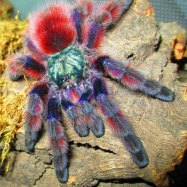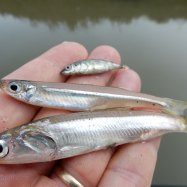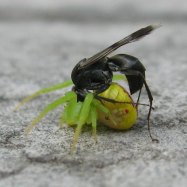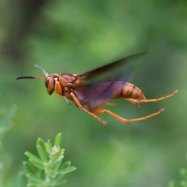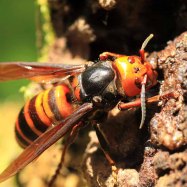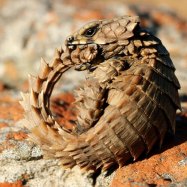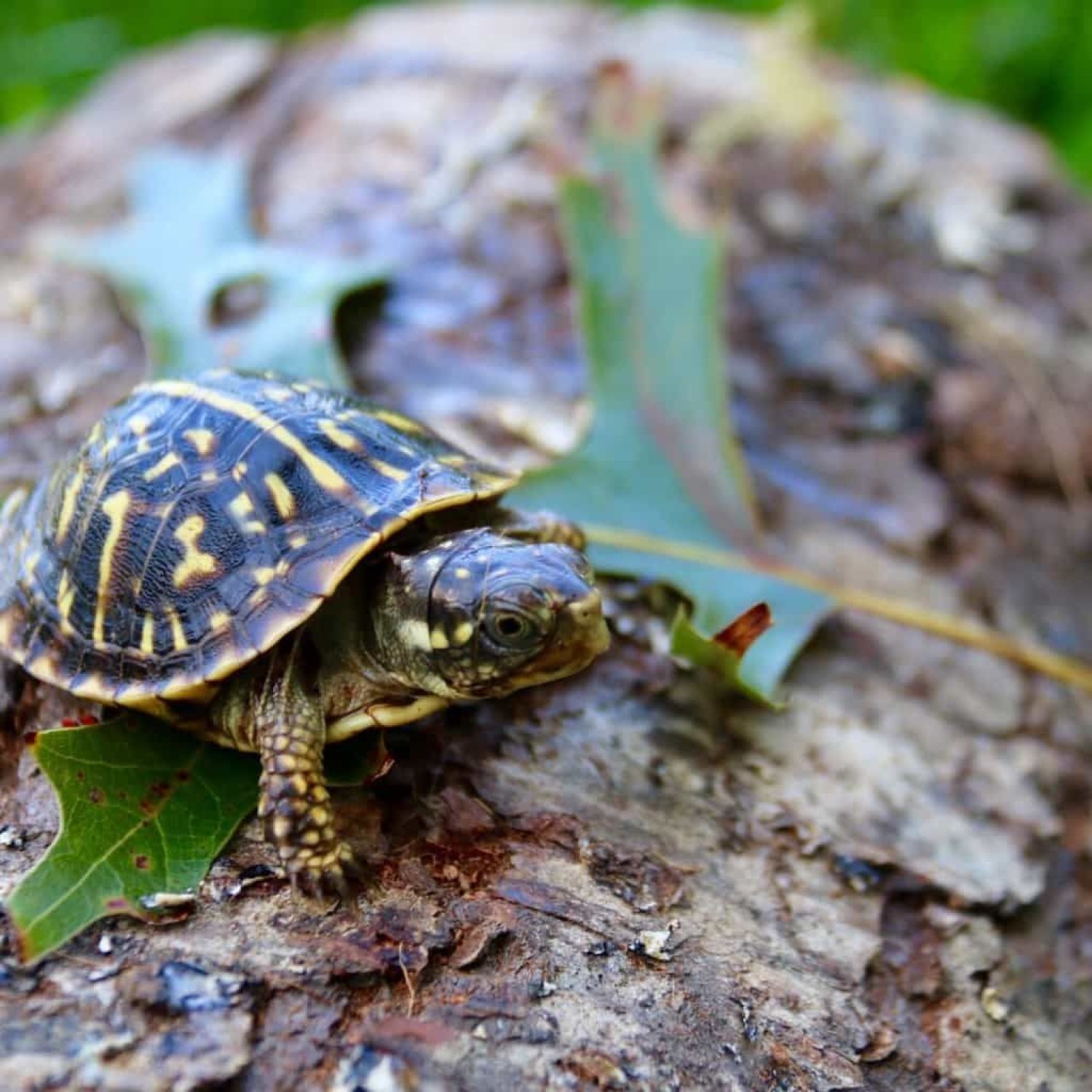
Ornate Box Turtle
4-6 inches (10-15 cm)
The ornate box turtle, found in the central and southern United States, is a fascinating creature. With a low-domed, turtle-shaped body and a length of 4-6 inches, these turtles are a popular choice for small pets. However, it's important to know that they have specific care requirements, so be sure to do your research before getting one as a pet! #OrnateBoxTurtle #PetTurtle #Emydidae #TurtleCare
Animal Details Summary:
Common Name: Ornate Box Turtle
Kingdom: Animalia
Habitat: Grasslands, meadows, and open woodlands
The Endangered Beauty of the Ornate Box Turtle
Deep in the grasslands, meadows, and open woodlands of North America lives a creature of rare beauty and importance – the Ornate Box Turtle (Terrapene ornata). This charming reptile, with its distinctive brown or black shells adorned with yellow or orange lines and spots, is a symbol of resilience and survival in an ever-changing world. As a member of the Animalia kingdom, Chordata phylum, Reptilia class, Testudines order, and Emydidae family, it holds a crucial role in the ecosystem and faces various threats that have led to its endangered status. Join us as we delve into the world of the Ornate Box Turtle and explore its unique characteristics, habitat, diet, and the challenges it faces for survival Ornate Box Turtle.From Coast to Coast: Geographic Distribution and Habitat
The Ornate Box Turtle is a native of the United States and Mexico, with its main distribution area being in the central and southern regions of the United States. It can be found in 19 states, from Texas to Arizona in the west and eastward to Ohio and Kansas. However, its range has shrunk significantly due to habitat fragmentation and loss.These turtles prefer to live in grasslands and meadows, where they can easily burrow into the soil to escape predators and find shelter from extreme weather conditions. They also inhabit open woodlands, making use of the leaf litter and dense vegetation for cover. Unfortunately, with the expansion of agriculture and urbanization, the grasslands and woodlands that they call home are rapidly disappearing, leaving little space for these turtles to thrive.
A Feast Fit for an Omnivore
The Ornate Box Turtle is a true omnivore, dining on a wide variety of plants, fruits, insects, snails, worms, and carrion. This diverse diet allows them to adapt to different environments and increases their chances of survival. Hatchlings, in particular, have a more carnivorous diet, feeding mostly on insects and worms before transitioning to a more plant-based diet in adulthood Oak Toad.One of the most fascinating aspects of this turtle's diet is that they are known to consume poisonous mushrooms that are avoided by other animals. With the help of some bacteria found in their digestive tracts, these turtles can process and eliminate the toxins, making them immune to the mushrooms' harmful effects. This unique trait showcases their adaptability and adds to their overall charm.
A Low-Domed Beauty
The Ornate Box Turtle has a distinct body shape, low-domed and turtle-shaped, making it easily recognizable among its turtle peers. Like other turtles, it has a high and low-dome shell – the carapace and plastron, respectively – connected by a bridge. The shell, which protects them from predators, is made up of plates called scutes. These turtles have a brown or black shell, with prominent yellow or orange lines and spots giving them a striking appearance.What makes these turtles even more unique is that their coloration can vary depending on the location and habitat they live in. For example, the ones found in sandy areas are usually lighter, while those inhabiting rocky regions tend to have darker shells. This allows them to blend in with their surroundings, providing camouflage and protection from predators.
A Vulnerable Future
Despite their adaptability and resilience, the Ornate Box Turtle faces numerous threats to its survival. Habitat destruction, mainly due to human activities, is the primary cause of decline in population. As grasslands and woodlands are converted into farmlands and urban areas, these turtles are left with smaller and fragmented habitats, making it difficult for them to find food and mates.These turtles also face danger from road traffic as they often cross roads during migration or while searching for new habitats. Many are also picked up as pets or for the illegal pet trade, depleting the wild populations.
Conservation Efforts and Hope for the Future
The Ornate Box Turtle has been listed as an endangered species by the International Union for Conservation of Nature (IUCN) due to the aforementioned threats and its declining population. However, there is hope for these turtles as many conservation efforts are being implemented to protect and preserve their habitats and populations.In some areas, farmers are encouraged to create grassland buffers that can provide suitable habitats for these turtles. In addition, conservation organizations also work with landowners to implement sustainable land management practices that are beneficial for both farming and wildlife.
To reduce road traffic mortality, turtle tunnels and fencing are being installed in areas with high turtle activity. These measures allow turtles to safely cross the roads and reach their destinations. Many organizations also conduct outreach and education programs to raise awareness about the plight of these turtles and the importance of conservation efforts.
A Call to Action
The Ornate Box Turtle may only be a small creature, measuring 4-6 inches in length, but its impact on the ecosystem and its survival is of immense importance. As we continue to evolve and expand, it is our responsibility to protect and preserve the natural world and its inhabitants. By taking simple measures, such as avoiding collecting them as pets or being mindful of road traffic in their habitats, we can make a difference in the survival of these beautiful beings.In conclusion, the Ornate Box Turtle is a symbol of resilience, adaptability, and survival. With its unique characteristics, diverse diet, and challenging journey to survival, this turtle holds great significance in the animal kingdom. Let us continue to appreciate and protect these gentle creatures, ensuring that future generations can also witness their beauty and contribution to the ecosystem.

Ornate Box Turtle
Animal Details Ornate Box Turtle - Scientific Name: Terrapene ornata
- Category: Animals O
- Scientific Name: Terrapene ornata
- Common Name: Ornate Box Turtle
- Kingdom: Animalia
- Phylum: Chordata
- Class: Reptilia
- Order: Testudines
- Family: Emydidae
- Habitat: Grasslands, meadows, and open woodlands
- Feeding Method: Omnivorous
- Geographical Distribution: North America
- Country of Origin: United States and Mexico
- Location: Central and Southern United States
- Animal Coloration: Brown or black shells with yellow or orange lines and spots
- Body Shape: Low-domed, turtle-shaped
- Length: 4-6 inches (10-15 cm)
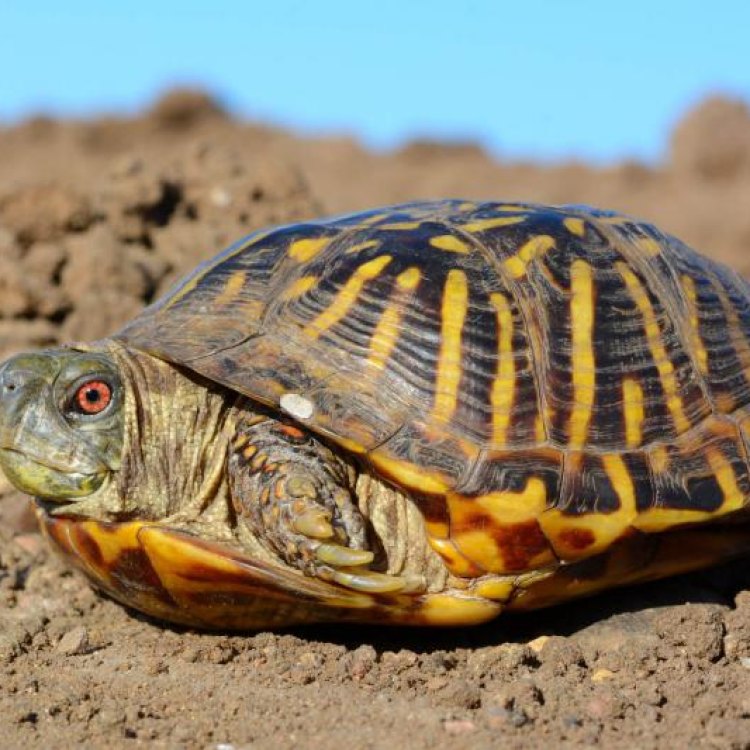
Ornate Box Turtle
- Adult Size: 4-6 inches (10-15 cm)
- Average Lifespan: 25-30 years
- Reproduction: Sexual
- Reproductive Behavior: Mating occurs in spring and fall
- Sound or Call: Ornate Box turtles are not known to make sounds
- Migration Pattern: Non-migratory
- Social Groups: Solitary
- Behavior: They retreat into their shells when threatened
- Threats: Habitat loss, road mortality, collection for the pet trade
- Conservation Status: Vulnerable
- Impact on Ecosystem: Important for seed dispersal
- Human Use: Captivity as pets
- Distinctive Features: Highly domed shell with attractive patterns
- Interesting Facts: They are one of the only two box turtle species native to the United States
- Predator: Raccoons, skunks, and other mammals
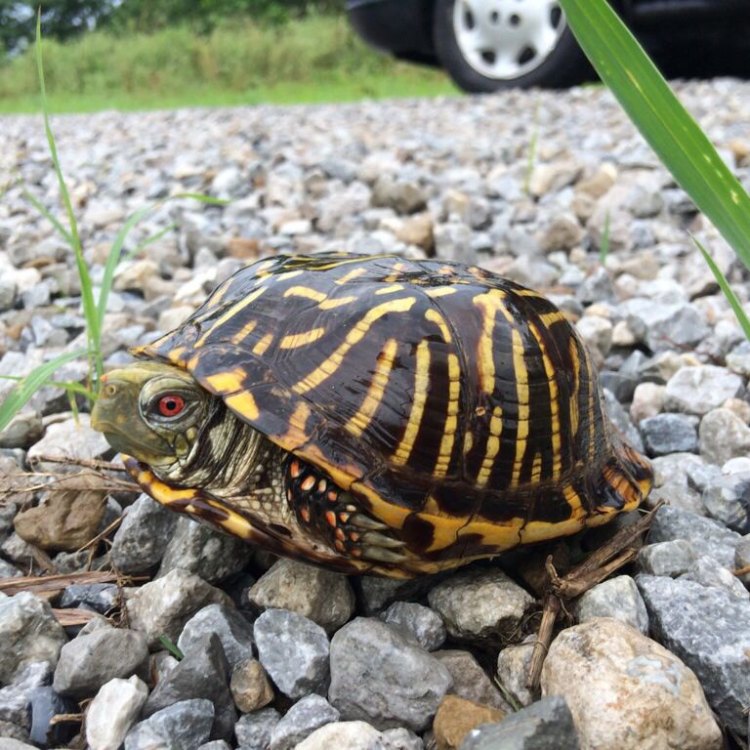
Terrapene ornata
The Ornate Box Turtle: Small Yet Mighty
When you think of turtles, the first image that comes to mind may be that of a slow-moving, shelled creature crawling across the beach. But did you know that there are over 350 different species of turtles, each with their own unique characteristics and behaviors? Among these fascinating reptiles is the ornate box turtle, a small yet mighty creature that calls the grasslands and prairies of the United States home.The ornate box turtle, scientifically known as Terrapene ornata, is a small terrestrial turtle that typically grows to be between 4-6 inches (10-15 cm) in length. While some individuals have been recorded to grow up to 8 inches (20 cm), these are considered rare PeaceOfAnimals.Com. They have a highly domed shell, with intricate and attractive patterns that vary in color from tan to brown, and can sometimes have red or orange highlights. These patterns not only give them their unique appearance but also serve as camouflage in their natural habitat.
But what sets the ornate box turtle apart from other turtles? Let's delve deeper into the intriguing characteristics and behaviors of this fascinating reptile.
Mating and Reproduction
Like many other turtles, the ornate box turtle reproduces sexually, with mating occurring in both the spring and fall. During these times, males can often be seen engaging in elaborate courtship rituals, which involve bobbing their heads and extending their front legs to impress potential mates. Once a male has successfully found a mate, he will use his long claws to gently stroke the female's head and neck to encourage her to mate.
Once the female has mated, she will lay a clutch of 4-6 eggs in a shallow nest dug into the ground. The incubation period for these eggs can vary from 50-100 days, depending on environmental conditions. Interestingly, the gender of the offspring is determined by the temperature at which the eggs are incubated Old House Borer. Higher temperatures produce more females, while cooler temperatures lead to more males.
Behavior and Threats
Ornate box turtles have a solitary nature and are most commonly found living alone. They are not known to form social groups or exhibit any group behaviors, except during the mating season. When threatened, they have a unique defense mechanism – they retreat into their shells and close the hinged bottom, completely sealing themselves in and protecting their vulnerable bodies from predators.
Speaking of predators, the ornate box turtle faces several threats in its natural habitat. One of the biggest dangers is habitat loss due to human development and agriculture. As grasslands and prairies are converted into urban areas or agricultural land, the ornate box turtle's habitat is destroyed, leaving them without a place to thrive. Additionally, road mortality is also a significant cause of decline in their population.
Sadly, the ornate box turtle is also being collected for the exotic pet trade. While they may seem like low-maintenance pets, they require specific environmental and dietary needs that can be hard to meet in captivity. This practice has significantly impacted their population in the wild, leading to their conservation status being listed as "Vulnerable."
Conservation and Impact on the Ecosystem
The decline of the ornate box turtle population is a cause for concern since these reptiles play an essential role in their ecosystem. As seed dispersers, they help in the growth and diversity of plant life, which, in turn, supports other animals in the food chain. Without the presence of the ornate box turtle, the balance of the ecosystem could be disrupted, leading to negative consequences.
To protect this species, efforts are being made to conserve and restore their natural habitat. Some organizations are also working towards educating the public about the importance of preserving this small but mighty creature and discouraging the collection of wild turtles for the pet trade.
Human Use and Distinctive Features
While the ornate box turtle is not particularly sought after for human use, it is occasionally kept as a pet. However, as mentioned earlier, this practice can be harmful to the turtle and their population in the wild. If you are considering having an ornate box turtle as a pet, it is essential to do thorough research and ensure that you can provide a suitable environment for their needs.
One of the most distinctive features of the ornate box turtle is its vibrant and intricate shell patterns. Each individual has a unique pattern, making them easily identifiable and adding to their appeal. Unfortunately, this also makes them an attractive target for illegal collection and trade.
Interesting Facts
Beyond their captivating appearance and unique behaviors, there are many fascinating facts about the ornate box turtle. For instance, did you know that they are one of only two box turtle species native to the United States? The other is the Eastern box turtle, which is found in the eastern and central parts of the country.
Another interesting fact is that the ornate box turtle is one of the few vertebrates that can survive freezing temperatures. In harsh winter climates, they can hibernate by digging themselves into the ground, lowering their body temperature, and essentially freezing until spring arrives.
Predators and Conclusion
Some common predators of the ornate box turtle include raccoons, skunks, and other mammals. These predators are known for digging into turtle nests and feeding on eggs, which can significantly impact the turtle's population. Conservation efforts, such as protecting nesting sites and habitats, can help reduce these threats and protect the survival of this species.
In conclusion, the small and unassuming ornate box turtle may seem like just another turtle, but they are an important part of their ecosystem and play a vital role in maintaining the balance of nature. As with any other species, the decline of their population would have a ripple effect throughout the ecosystem, which is why it is crucial to understand and appreciate the unique features and behaviors of this remarkable reptile. With conservation efforts and responsible actions, we can ensure that the ornate box turtle continues to thrive for generations to come.
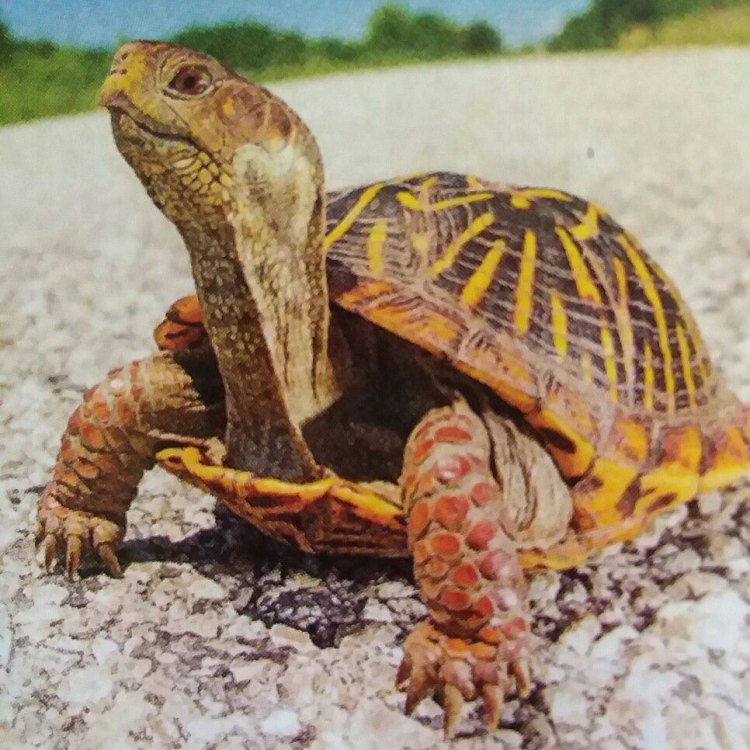
The Endangered Beauty of the Ornate Box Turtle
Disclaimer: The content provided is for informational purposes only. We cannot guarantee the accuracy of the information on this page 100%. All information provided here may change without prior notice.

